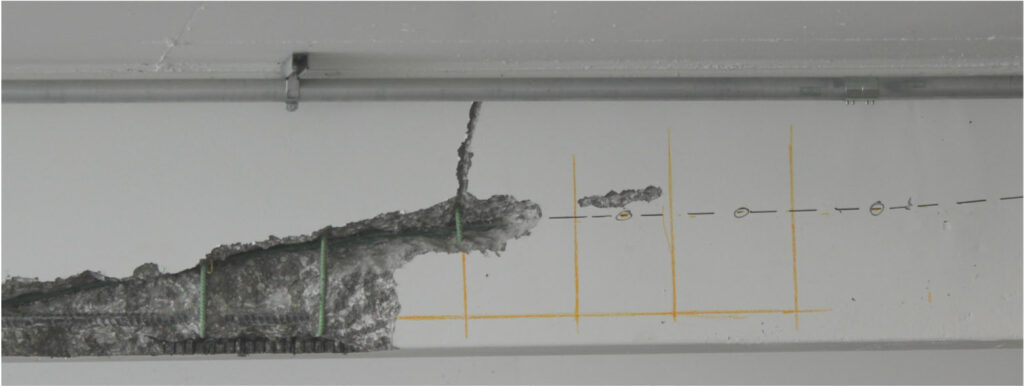RainierGPR Service Areas: Comprehensive Insurance Coverage for Concrete Scanning
RainierGPR Service Areas: Comprehensive Insurance Coverage for Concrete Scanning
Blog Article
Concrete Scanning: A Vital Action Towards Guaranteeing Architectural Honesty and Safety
In the world of construction and framework maintenance, the importance of concrete scanning can not be overemphasized. By employing sophisticated technology and techniques, concrete scanning serves as a critical device in guaranteeing that the integrity and security of buildings and bridges are maintained to the highest criteria.
Significance of Concrete Scanning
Concrete scanning plays an essential function in ensuring the architectural integrity and security of structures and infrastructure projects. By making use of advanced innovations such as ground-penetrating radar (GPR) and electro-magnetic induction, experts can non-destructively examine concrete structures to identify potential problems, spaces, ingrained objects, and reinforcement layout. This process allows early discovery of anomalies that can compromise the stability of a framework, avoiding expensive damages and making sure the safety of owners.
Concrete scanning is especially essential during the planning and building stages of a task. Prior to exploration, reducing, or coring right into concrete, scanning helps determine the exact places of rebar, post-tension cords, and various other embedded elements, reducing the threat of unintentional hits that can lead to architectural weak points. In addition, concrete scanning help in quality assurance by validating the thickness of concrete covers and finding any kind of disparities that may affect the general toughness of the structure. Ultimately, purchasing concrete scanning solutions is not just a proactive measure to mitigate risks however likewise a fundamental action towards preserving the long-lasting safety and security of buildings and infrastructure.
Innovation for Concrete Examination

Benefits of Very Early Discovery
Prompt discovery of architectural issues can substantially minimize threats and make certain the long life of building and construction projects. By recognizing possible troubles early on in the building and construction process, stakeholders can take positive procedures to address issues before they intensify into larger and more pricey troubles. Among the vital advantages of very early detection is the prevention of structural failings, which can posture significant safety and security threats and result in project hold-ups and monetary losses.
In addition, very early discovery enables for timely fixings and maintenance, which can assist extend the life-span of the framework. By attending to issues promptly, construction groups can stay clear of expensive repair work and even the need for early replacement of architectural parts. This aggressive technique not only conserves money and time yet also boosts the total safety and durability of the building job.
Furthermore, early detection can improve project planning and decision-making by supplying stakeholders with useful understandings right into the problem of the structure. Armed with this information, job supervisors can make enlightened options concerning building timelines, products, and approaches, bring about more efficient and successful project results.
Making Certain Structural Security
Guaranteeing the structural security of a building and construction job is critical to its security and long life. Concrete scanning plays a critical duty in making certain architectural stability by spotting potential issues such as voids, delamination, or support deterioration additional hints that might jeopardize the integrity of the structure over time.
By making use of advanced scanning innovations like ground-penetrating radar (GPR) and electromagnetic induction, building and construction specialists can non-invasively examine concrete structures to recognize locations of problem underneath the surface. This positive technique allows for the early discovery of problems or weaknesses, allowing punctual repair services or reinforcement to prevent architectural failings.
Routine concrete scanning throughout various construction stages and throughout the life cycle of a structure can aid preserve its security, reduce risks, and ensure the safety and security of residents. By focusing on structural security with concrete scanning, building tasks can enhance their strength and longevity, inevitably contributing to better security and long life.
Avoiding Important Failings
To secure versus devastating occasions, precise tracking and aggressive upkeep are essential in avoiding critical failings within architectural structures. Detecting possible concerns prior to they rise is key to stop structural failures. Executing regular inspections, such as concrete scanning, can expose surprise defects like voids, splits, or deterioration that might endanger the honesty of a structure. By using innovative scanning innovations like Ground Permeating Radar (GPR) or Concrete X-ray, designers can non-destructively assess the problem of concrete and recognize weak points that require support or repair service - RainierGPR Service Areas.

Verdict
Finally, concrete scanning plays a crucial function in guaranteeing architectural integrity and safety by utilizing advanced technology for very index early discovery of prospective issues. This proactive strategy aids stop critical failures and guarantees the security of structures. It is vital to prioritize concrete assessment as a basic method to secure the longevity and safety of buildings and facilities.
Concrete scanning plays a critical function in ensuring the architectural stability and safety of structures and infrastructure tasks. Furthermore, concrete scanning aids in top quality control by validating the density try here of concrete covers and finding any disparities that may influence the general resilience of the framework. Concrete scanning plays an important duty in making sure architectural security by spotting possible issues such as gaps, delamination, or reinforcement rust that could compromise the stability of the framework over time.

In verdict, concrete scanning plays a crucial function in guaranteeing structural honesty and safety and security by using sophisticated modern technology for very early discovery of prospective issues.
Report this page